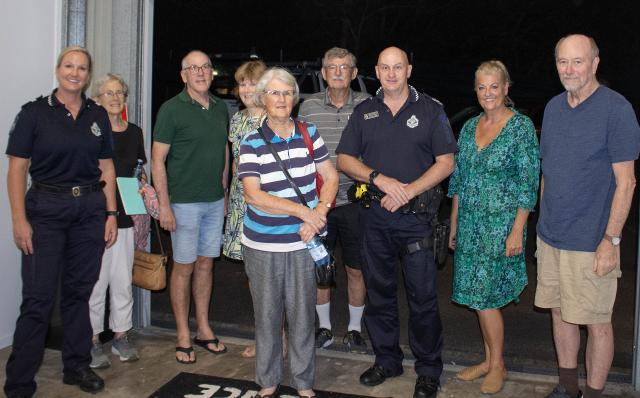
Noosa police are enlisting community social media groups in a new crime fighting initiative aimed at delivering more immediate information between police and the community.
Last week Noosa police officer in charge Senior Sergeant Anthony Cowan called a meeting of local Facebook page administrators to discuss their potential role in becoming part of a community crime watch online network.
Neighbourhood Watch groups have long been the dominant community crime watch vehicle but the number of groups across Noosa has dwindled in recent years to just two covering Peregian Beach and Noosa Waters.
Having initiated an online crime watch in his previous posting in Mackay, Snr Sgt Cowan knew something similar would work in Noosa
The benefits were that Facebook groups were able to tap in to their members and deliver messages quickly, he told the group.
“If someone gets a message ‘there’s been a break-in in your area, lock your door’ it has the local touch. People are more likely to lock up when they see their neighbour’s been broken into,” he said.
Between them, the attendees have direct links to tens of thousands of Noosa locals through their sites, including community noticeboards and digital newsletters.
One negative aspect of social media raised by Snr Sgt Cowan was its potential to generate an exaggerated perception of crime events.
“Social media amplifies the perception of crime,” he said.
“You hear about it more than you used to so it appears there is more crime. The message is hyped up.”
In Noosa, crime has gone up in the past five years but per capita, it’s still a low crime rate, he said.
To balance this perception and allay concerns, the officers suggested they occasionally provide crime statistics, including those showing when no crimes have been committed.
When it comes to police time, Snr Sgt Cowan said most call outs from the public were about noise, an issue “fixed in five minutes”, followed by domestic violence, which consumed most of their time and impacted all demographics.
The issue which police believe the community could most provide useful information about is one involving youths coming up from Brisbane in stolen cars, breaking into houses and stealing cars before returning.
Stealing, joy riding and posting their actions on social media is the aim of these young offenders. They don’t cover up their appearance. They do it for the glory, to have their actions liked by friends, he said.
These are not well-planned operations. Most kids come from Brisbane, steal and return. They don’t do research. They’re not scoping out houses.
Kids may walk up a street checking door handles for one unlocked – a practise known as creeping.
Individuals have different modes of operation (MOs).
One thing police were certain of was that the offenders would be members of local social media groups.
If they see themselves on your page, they’ll stop, Snr Sgt Cowan told attendees.
Snr Sgt Cowan said obtaining footage from privately-owned CCTV cameras and alerting police to criminal activity would be the best case scenario in assisting their work.
The police already have cameras on Hastings Street live-streaming directly to the station, which has been “very beneficial”.
Snr Sgt Cowan said the great percentage of these youth crimes were solved but the quicker they got information of the crimes taking place, the faster the perpetrators would be apprehended.
Through numberplate recognition on the highway, police aim to identify stolen cars and stop them before they arrive in Noosa, he said.
Noosa Waters Residents Association representatives were well aware of these criminal activities, they told the meeting.
They said their residents had plenty of toys to steal, a number had been burgled and had cars stolen and some had discovered thieves in their homes and were quite traumatised by the experience.
All attendees were keen to be involved.
In addition to sharing information on crime, police said the communication network could also be used in times of natural disaster to update locals.






